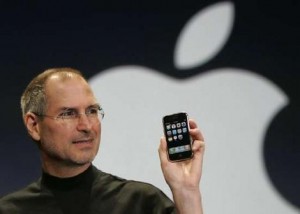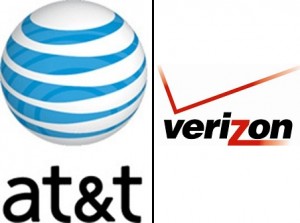The first iPhone Jobs did not sign off on & why you will use more data with LTE, even without changing your habits.
Every year, around late summer to early fall, my appetite whets for the newest variety Apple from Cupertino. I have been using, and loving, my iPhone 4 for over two years now. Being an amateur videographer and hobbyist iPhoneographer, I have-for over a year-lamented that my handset could not capture 1080p video and images greater than 5 megapixels. Also with my wife having an iPhone 4S, I rarely forget Siri is not available on my device, although the hardware is proven to run it swimmingly in jailbreak scenarios. But, I digress. My two year contract obliged, I look forward to the innovation and hidden delights I am sure to find in the next great Apple phone to be debuted in September. I suspect that, without much latitude to differentiate hardware specs from comparable Android devices, Apple will do what it has always done, make must-have software that only runs on its newest devices. And, I have become accustomed to paying the “Apple tax”-a premium price to have hip features. I think back to iMovie’s 1080p export and Siri, which were almost enough to prompt the purchase an unsubsidized phone last year. This year, I look forward to a larger screen with a 16:9 aspect ratio that better delivers widescreen video content. I look forward to a better video and still camera than I currently have. I look forward to the small things, like not having to re-orient my device 180 degrees when removing from my pocket now that the headphone jack will be on the bottom of the device. But, unlike a lot of tech-enthusiasts, a feature that I am “not” looking forward to is the inclusion of LTE radios for 4G service in the US. There are two main reasons why I do not look forward to 4G on my device–current carrier data plans are too expensive (and getting worse) and even without changing my device usage habits, I will be using more data with a 4G device.
Previously, with Steve Jobs at the helm of Apple, the company was not one to rush in when supporting the latest technologies (think 3G with the first iPhone) were not up to snuff. At the time, the tradeoff of battery degradation for all phones versus good 3G coverage for “some” of the customers did not justify including 3G into the phone. Also, at the time, the lack of 3rd party apps meant that your app experience was HTML 5 apps through Safari and shortly-thereafter a small jailbreak community, so the need for large data pipes was not there yet. Fast forward to today where it is common to stream video through services such as Netflix and Slingplayer and to stream podcasts on-the-fly using Apple’s most recent podcasting app, and the need for fat data streams is evident.
Yesterday, I ran reports through my AT&T account, that showed that I use about 5GB of data in an average month. Although I do not feel as though I am abusing my grandfathered unlimited plan through any strange usage other than the above mentioned items, AT&T considers me a data hog and has even contacted me to let me know that my traffic will be throttled to 2G speeds once I hit the 3GB mark. I know that my data usage will only increase with 4G LTE, even without changing my habits. Let me explain!
Most streaming services, Youtube video being a prime example, will buffer video before streaming. The buffering process downloads the file in the background of the device and will make sure that enough of the file is pre-loaded to allow for smooth playback of video. In other words, enough data has to be downloaded to allow the file to complete downloading before the end of the video is reached. This is not perfect science, and sometimes the buffer slows down and the video will stop playing-not having any more content loaded in the background. This process of pre-buffering content is where I will notice the largest data spike with a 4G device. With a 4G connection, more data is downloaded faster. Though this will help deliver higher quality content in a smoother fashion for videos that I want to watch, where I am concerned is the videos that I decide not to watch after 5 seconds or so. On an older device, I may be able to stop the video and go back to the search page before much of the file is downloaded. Faster download times mean I no longer have the luxury. In other words, Youtube will download even more of the video that I decided not to watch using 4G instead of 3G. So even if I make the decision to stop watching a video at the same time on my new device, my data usage is higher because more of the file will be buffered.
This will amount to a drastic increase in data usage and carriers know it. I firmly believe that this is why such a strong push is being made to move customers to limited (think Shared) data packages before the release of the newest iPhone 2012. If the customer does not switch, 4G devices merely mean more load to the carrier without more revenue, whereas moving from unlimited to limited plans mean that more customers will be paying for data once they surpass their threshold.
I cannot fault carriers for changing their plans and pricing models to support their network load and maintain profit. That is what companies do anyway. I am merely pointing out that if you are making decisions about your next iPhone based on your current data usage, you need to know that your data use will rise with 4G service even without changing your habits.
I think that Steve Jobs would be turning in the grave today if he observed the major carriers (Verizon and AT&T)–especially with moves like AT&T limiting Facetime to Shared Data plans. I think that he would be doing more to urge carriers to provide attractive data plans for their devices or even possibly considering making Apple an MVNO (a virtual network operator) in order to create packages where customers can purchase more Apple consumable media products (movies, books, music and apps) and use Apple’s great features (such as Facetime over cellular, that will be available in iOS6). For the first time, I believe that I need to explore purchasing an unsubsidized phone–if only for the reason of not having to change my grandfathered unlimited data plan (speculation). I will also have the option to move the device to alternate carriers if I so choose. The biggest unknown at this point is whether or not AT&T will force customers into a new 4G data plan (such as a 5GB cap) to even get the next iPhone. If this is true, I may be looking at alternatives such as Sprint (which has the iPhone now) or T-Mobile (who recently announced “truly unlimited data” and “may” get the next iPhone). We shall see.






